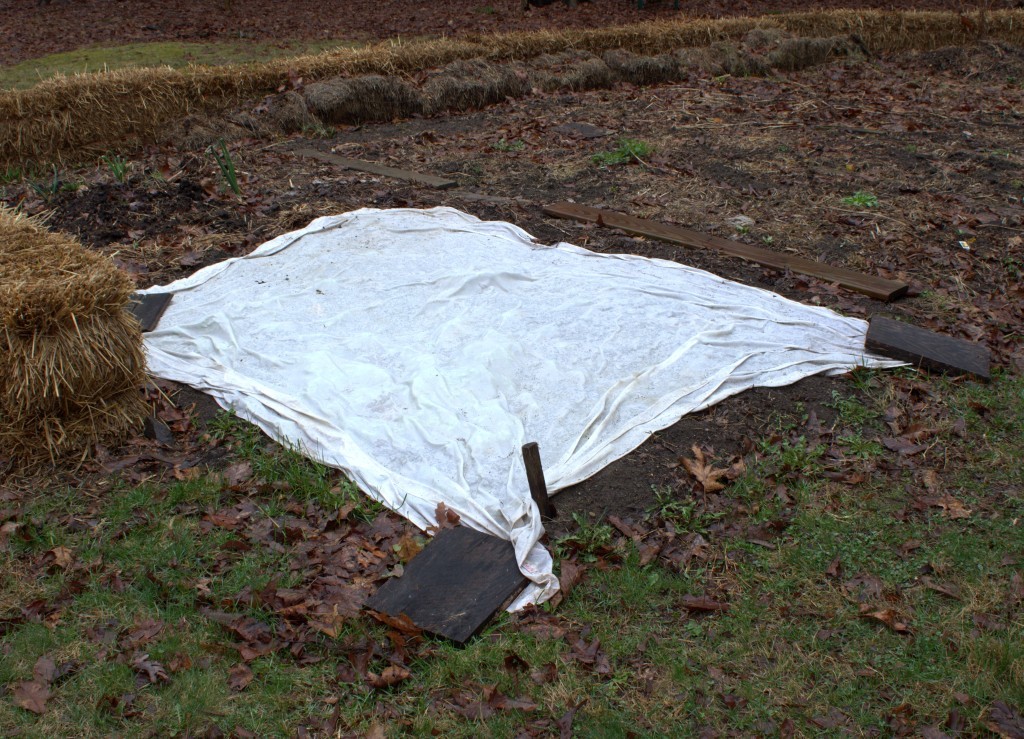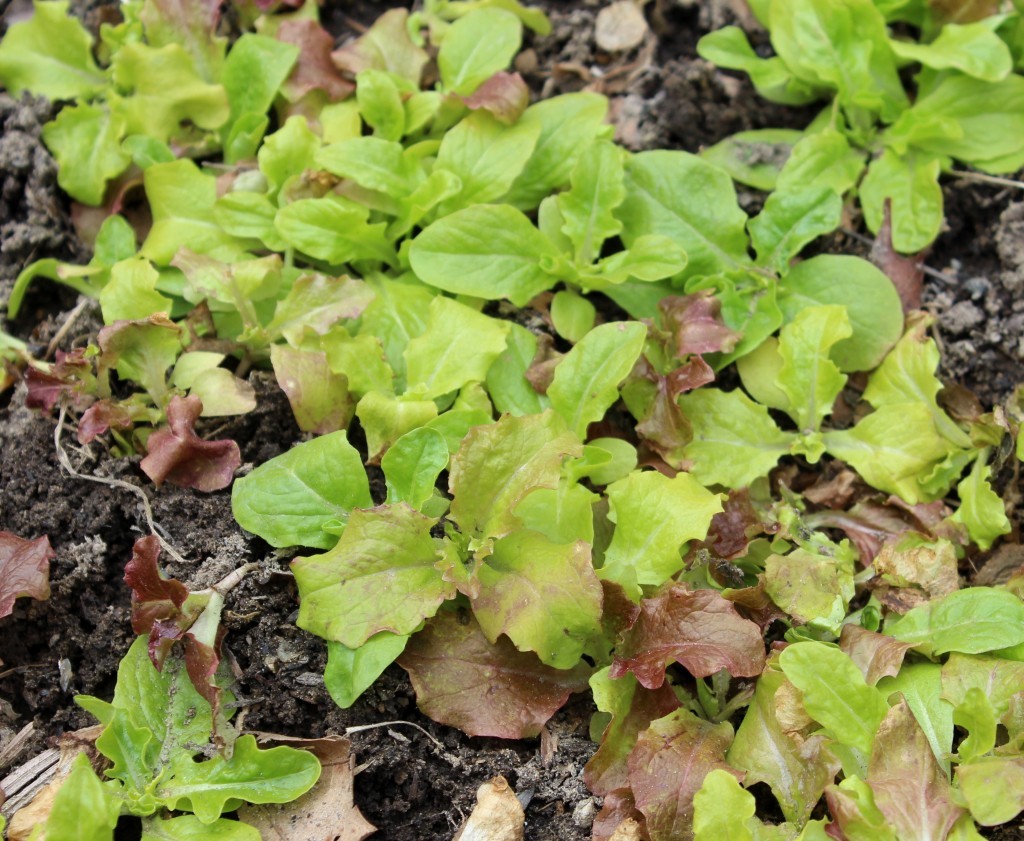Since freezing temperatures started in the Fall and throughout Winter and on into early Spring, we’ve had the lettuce starts covered with sheets.

It doesn’t sound like much protection from Old Man Winter, but simply placing a piece of cloth over them will protect baby lettuce plants from the frost and snow.
I was reminded of another reason to cover the lettuce and that is critters like to eat the young tender plants.
One morning this week I spied from my kitchen window a rabbit about 10 feet from the garden. She was munching on the weeds we have for a lawn. I saw then that the lettuce did indeed remain covered for the night and was kept safe from hungry bunnies. Sigh of relief!
Even though we haven’t had freezing temperatures at night for a week or longer, the lettuces remain covered with sheets. During the day the sheets may or may not be removed and the plants will do just fine. Today is going to be real sunny so the covers will come off.
Having the lettuce uncovered during the day is a lot safer than having it uncovered at night because wild rabbits are nocturnal. Even so, they’ll be out in the daylight hours, too. Last year I saw a Momma Bunny making her nest during the day, so uncovering your lettuce during the daytime isn’t foolproof.
Keep watching your garden for signs of animal activity and get out those sheets. If you’re near a garden center, pick up some floating row covers to protect more of your garden plants.
